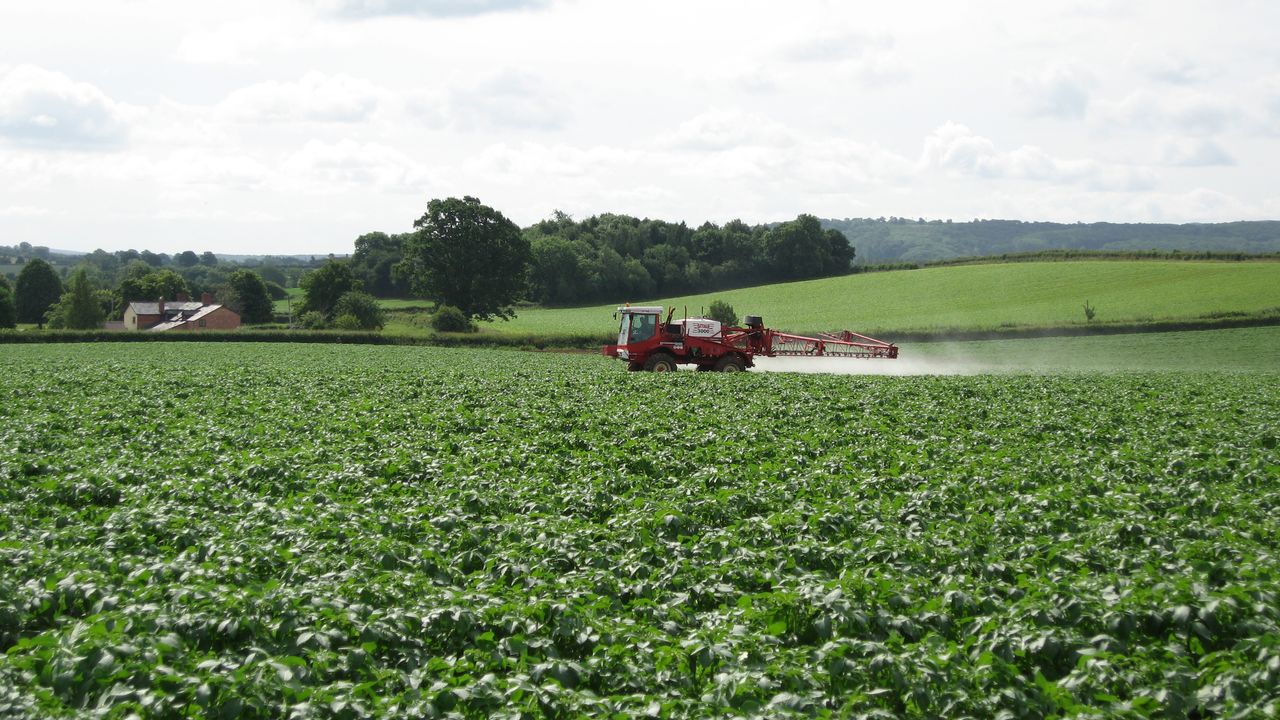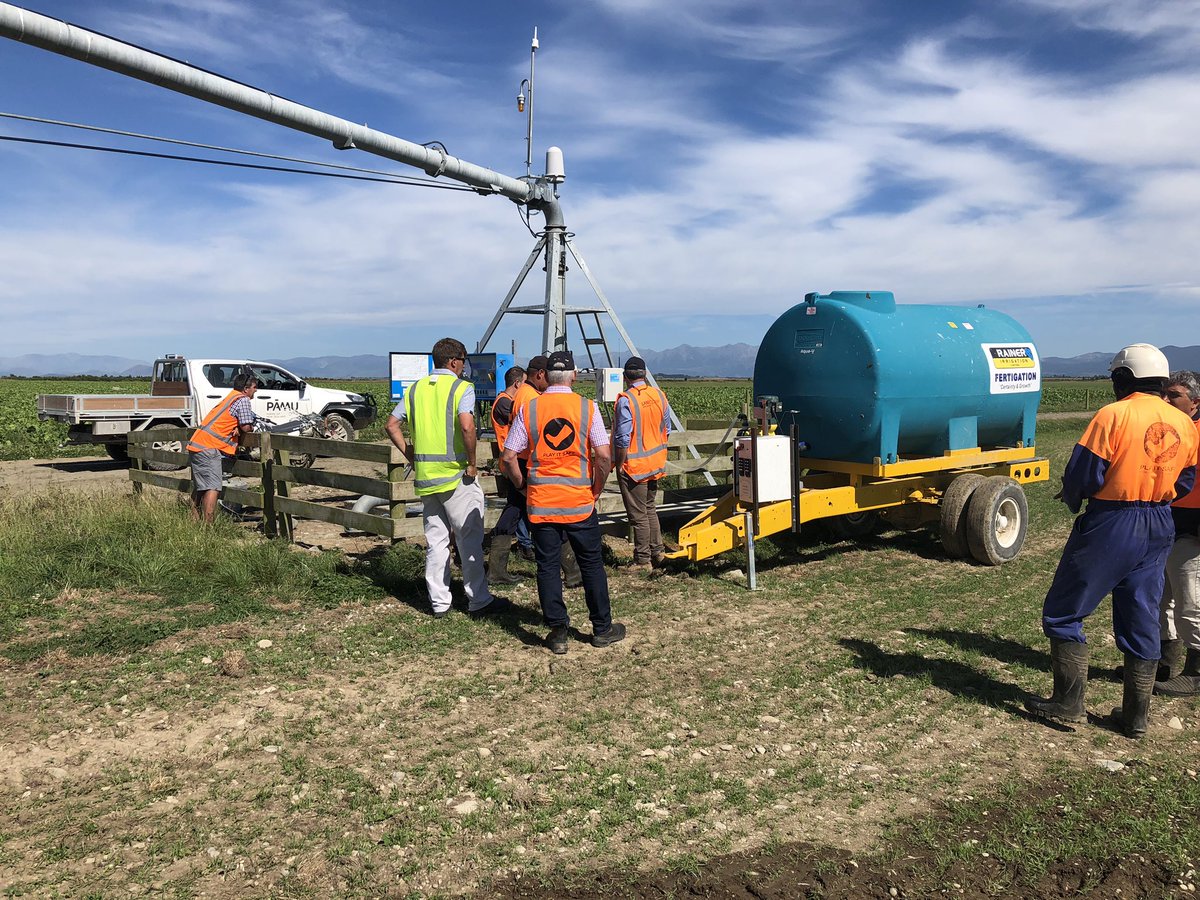The potato is one of the plants with a high potassium demand. This element is taken up in significant amounts, affecting both the size and quality of tubers, and increasing plant disease resistance.
One of the key ingredients for a potato is potassium. Unit intake of this component necessary to produce 1 t of tubers with by-yield is up to 6 kg of K2O, i.e. to obtain a tuber yield of 30-40 t / ha, plants consume from 180 to 240 kg of this component.
Physiological functions
Due to such a high demand, potassium performs many key functions in the period of growth and development of potato plants. It is the main component responsible for the transport of assimilates from leaves to tubers, hence it is considered to be the second, after nitrogen, yield-generating component. In addition, the appropriate supply of potassium in potato plants has a beneficial effect on a number of tuber quality features by:
reducing the sensitivity of tubers to all types of tuber darkening processes, both raw and after cooking, increasing the content of vitamin C and starch, and tuber resistance to mechanical damage, and thus improving their storage capacity, reducing the content of reducing sugars in tubers and increasing the viscosity of starch gruels, which improves their technological properties.
Potassium fertilization also has a positive protective effect against the attack of pathogens. However, in recent years, which is related to the high frequency of periods with a significant deficit of rainfall during vegetation, the role of regulating water management, or more precisely – better hydration of plant tissues under the conditions of an adequate potassium supply, thus increasing their role is becoming more important. drought resistance.
Why you need to feed
Basic mineral fertilization with this component applied to the soil before planting, determined on the basis of soil analysis, in periods of drought is often insufficient, which results from the limitation in potassium uptake in the absence of water, and therefore cannot be fully utilized. Therefore, the potato plants’ needs in terms of potassium may not be fully met, which may have a negative impact on the yield and quality of tubers. Hence, an effective way to supplement potassium deficiency in such conditions may be its foliar application. Potassium applied as foliar helps to maintain the turgor of the plant tissues.
This is an important factor protecting plants against wilting during the drought period, which is particularly important in the period of intensive crop accumulation, because plants well supplied with potassium consume from 20 to 50 percent. less water to produce it. The critical period, i.e. the greatest demand and uptake of potassium in the case of potato plants, begins with the flowering phase, which coincides with the intensive accumulation of BBCH 40 tuber mass and lasts until the tubers reach 90 percent. typical weight of BBCH 48.

What to feed the potato with?
A good solution, if there is a need to supplement this ingredient, is to use a 4-6% potassium sulphate aqueous solution, i.e. from 4 to 6 kg of fertilizer dissolved in 100 l of water or multi-ingredient fertilizers with this ingredient in the dose recommended by the manufacturer.
Potassium sulphate is characterized by good solubility in water, a high content of potassium (which in the form of potassium oxide constitutes 52%), and in addition, a high content of sulfur (SO3 – 46%), a macronutrient necessary in protein synthesis and also positively influencing the taste. potato tubers. In the case of treatments applied prophylactically – i.e. without visible symptoms of deficiency of this component on plants, but only prompting them to perform them due to unfavorable weather conditions or supplementing basic soil mineral fertilization and the possibility of increasing the tuber yield – it is sufficient to perform 2-4 treatments during the period vegetation.
On the other hand, in the case of interventional treatments, i.e. on the basis of visible symptoms of potassium deficiency on the plant or when the results of the analysis of the plant material indicate its content is too low (hidden deficiencies), it may be even 5-6 treatments performed at intervals of at least 7 days. It is best not to increase costs and combine these treatments, whenever possible, with other treatments, such as plant protection. Symptoms of potassium deficiency in potato plants most often appear in the form of a withered plant habit, older leaves turn gray-green, dry at the tops and edges, curl upwards and then fall off.
Own research results
In a study carried out at the Department of Potato Agronomy IHAR-PIB, Jadwisin Division, three foliar treatments during the growing season with Ekosol PK liquid fertilizer with a composition of 10% were used as a preventive supplement to basic mineral fertilization with NPK. P2O5 and 20 percent. K2O, in the dose of 6 l / ha for each treatment, the yield increased by 4.2 t / ha, i.e. 11.2%. in relation to the control object, without foliar feeding. Moreover, a greater share in the yield of large tubers, an increase in the content of starch and vitamin C, and a slight decrease in nitrates in tubers after the application of this fertilizer were found.
Fertilizers have become more and more popular in recent yearswhose effectiveness is confirmed in unfavorable weather conditions. To meet these expectations, fertilizers are currently produced in various technologies, e.g. with the use of natural plant amino acids, sea algae, microorganisms of various origins, humic compounds or rock formations ground to dust.
In general, these are products that combine nutritional functions, contain macro- and microelements, as well as biostimulants – with the content of bioactive substances, which contribute to plant resistance to environmental stress, and thus have a better yield in extreme years in terms of the pattern of weather conditions during the growing season, as demonstrated in the IHAR-PIB studies, Jadwisin Department. After foliar application of fertilizer (2 treatments, 2 kg / ha),

It should be realized that the symptoms of potassium deficiency seen in plants may be difficult to determine from time to time due to the overlapping of other similar ones, e.g. due to disease reasons. In addition, the presence of visible symptoms on plants is usually associated with their replenishment too late, which may contribute to the loss of a part of the crop. Therefore, a better method is laboratory analysis of plants, and the best method – performing plant tests on the plantation during the growing season, using photo-optical devices, which allow for a quick assessment of the potassium content and the elimination of any hidden deficiency by foliar application.


